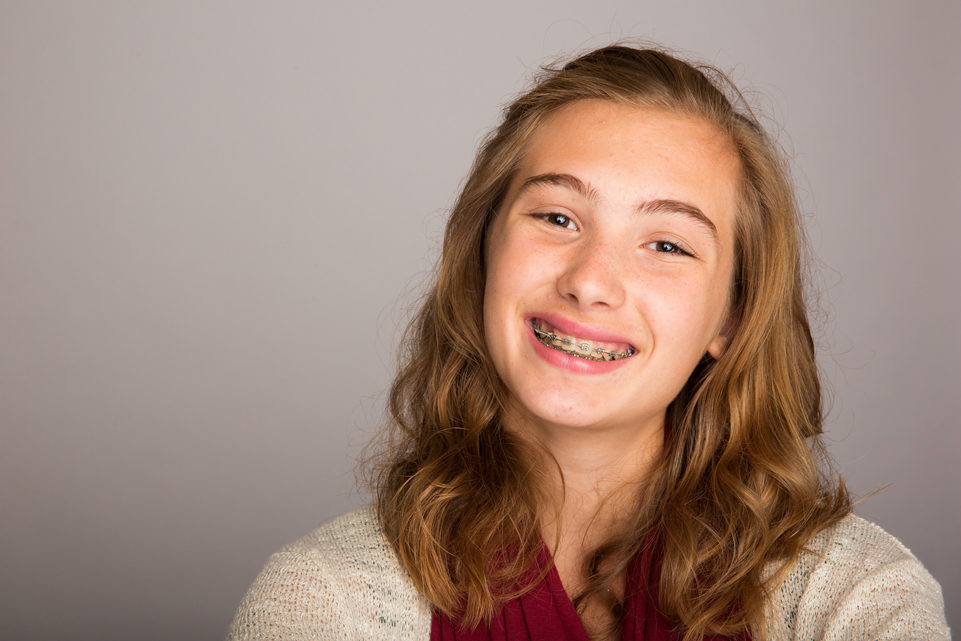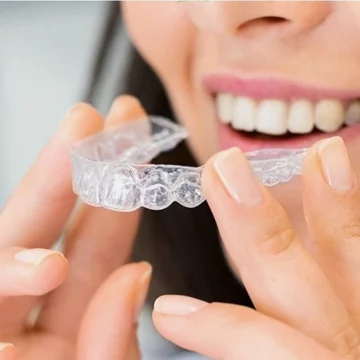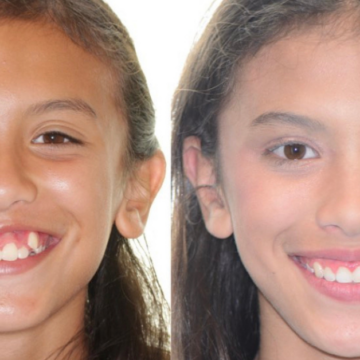What are braces anyway?
Braces is a generic term that refers to orthodontic appliances that are used to straighten teeth. Traditional braces comprise of brackets (the part that attaches to teeth individually), bands (metal rings placed on molars instead of brackets), wires (what actually moves the teeth) and color ties/bands (what holds the wires inside the brackets).
Are braces a new thing?
There is archaeological evidence that humans have tried different forms of orthodontics in ancient Egypt and Greece. Crude molars bands have been found in Egyptian mummies and it is believed they were used to straighten their teeth. Modern orthodontics can be largely attributed to Dr. Edward Angle who created his own discipline, named and classified orthodontic problems and formulated his own appliance system in the early 20th century.
The largest breakthrough in orthodontics however is the invention of dental adhesives in 1970s which allowed cementing brackets directly to the teeth rather than using metal bands on every individual tooth. Orthodontics have improved and changed a lot since. The basics are still the same, but braces have become smaller, less visible, more comfortable and more efficient. Most of the advances in orthodontics are technological; 3D scanners, 3D x-rays, lasers and clear aligner systems such as Invisalign have revolutionized orthodontics to the consumer’s benefit.
Is there a good alternative to traditional braces? What's Invisalign?
Invisalign is an excellent alternative to traditional braces. It is a 100% custom clear aligner aligner system that utilizes 3-dimensional virtual models of teeth to create a series of clear plastic aligners that straighten the teeth gradually. Invisalign has been around for around 20 years and has been through a lot of research and improvements since it was first introduced. Invisalign can now be effectively used to treat cases of various complexities in children as well as adults. You can read more about Invisalign here.
Do I need to see an orthodontist? Can my dentist do it?
An orthodontist is a dentist who specializes exclusively in orthodontics. Orthodontists receive additional 2-3 years of training to earn their degree and go through a rigorous multi-step examination process to establish their competence. While general dentists can and often times do provide orthodontic treatment to their patients, dentists do not have the same level of knowledge and clinical experience in orthodontics as specialized orthodontists do, therefore, it is always better to pursue orthodontic treatment with an orthodontist rather than a dentist.
What's a board-certified orthodontist? does it matter if my orthodontist is board-certified?
Only 1 in 3 orthodontists in the USA are certified by the American Board of Orthodontics. Orthodontists undergo additional didactic and clinical examinations in order to become board-certified. This indicates the highest level of clinical knowledge and ability to finish orthodontic treatments to the highest standard possible.
What about SmileDirectClub? That sounds easy enough
SmileDirectClub is a direct to consumer clear aligner system that allows individuals to get “treatment” without actually seeing an orthodontist. It’s major selling point is that it’s less expensive than being treated by an orthodontist. A quick online search will tell you all you need to know about negative experiences and “horror stories” people had endured with SmileDirectClub.
Successful orthodontic treatment requires a thorough exam, proper diagnosis and careful treatment planning. None of those essential elements are provided through SmileDirectClub. Your teeth are scanned by someone who has no official dental training, there is no exam of your teeth or tissues, your treatment is designed by technicians who are not licensed dentists and who have no background in orthodontics or biology. A lot of things can go wrong in orthodontic treatment and the risks are exponentially higher with SmileDirectClub.
For your protection and safety, it may be better not get orthodontic treatment at all than to do it through SmileDirectClub!
When should I have my kids checked for braces?
The American Association of Orthodontists recommends first orthodontic exam and screening at age 7. This is the age that permanent first molars and central incisors grow in most children. Examination at this age allows the detection of orthodontic problems at an early stage and helps us plan accordingly. Many problems can be addressed at an early stage before causing bigger problems.
Common issues to look for at age 7:
1. Missing teeth
2. Impacted teeth
3. Supernumerary (extra) teeth
4. Crossbite (anterior or posterio)
5. Underbite
6. Deep overbite
7. Excessive protrusion of upper incisors (excessive overjet)
8. Crowding
9. Abnormal habits (thumb sucking, tongue thrusting, etc…)
What's the best age for orthodontic treatment?
The best age for orthodontic treatment depends on a lot of variables including the type of problem(s) present, the growth pattern and the type of treatment recommended. Orthodontic treatment can sometimes be recommended as early as 7 years old or may be delayed until late teens. During the smile consultation appointment, we will discuss all the relevant factors and make a recommendation accordingly.
I'm an adult, can I get braces? Am I too old for orthodontics?
Adult orthodontics is becoming increasingly popular especially with the introduction of more cosmetic treatment options such as ceramic braces of Invisalign. There is no age limit for orthodontics as long as the teeth and gums are health and in good condition. Teeth move in adults in the same biological process as they do in children.
There are a few special considerations that apply to adult orthodontics:
1. Teeth move slower in adults in comparison to children
2. Jaws are done growing for the most part, which makes jaw correction using appliances such as expanders less feasible unless jaw surgery is involved
3. Adults often have additional treatment complexities; additional dental work, restorations, missing teeth and/or veneers.
To read more about adult orthodontics please click here.
Now that I know enough about braces, where do I begin?
Your first step is to do a smile consultation. This visit typically includes taking diagnostic records, performing a clinical exam and making treatment recommendations based on the findings and your expectations. You can read more about our smile consultations by clicking here.
Dr. Ramzi Daibis is a board-certified orthodontist and the owner of Band & Wire Orthodontics in Clarendon Hills, IL. He specializes exclusively in braces and Invisalign for children and adults. Band & Wire Orthodontics serves Clarendon Hills, Hinsdale, Westmont, Downers Grove, Oak Brook, Willowbrook, Burr Ridge, Western Springs, La Grange, La Grange Park and Chicago.



